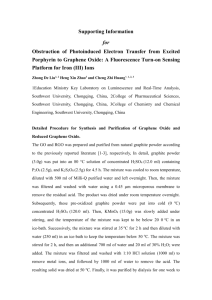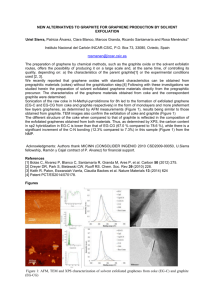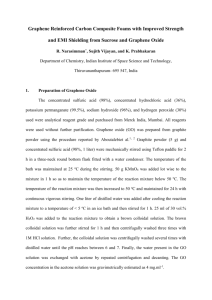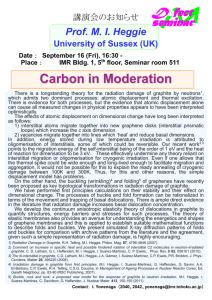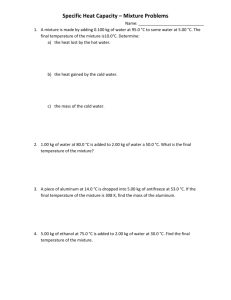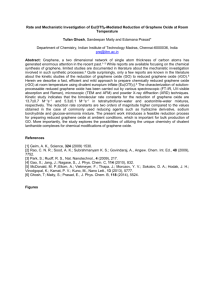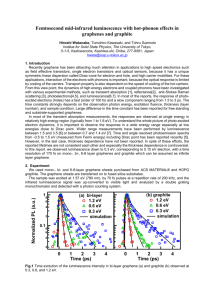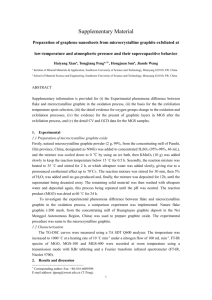jssc3854-sup-0001-SupMat
advertisement
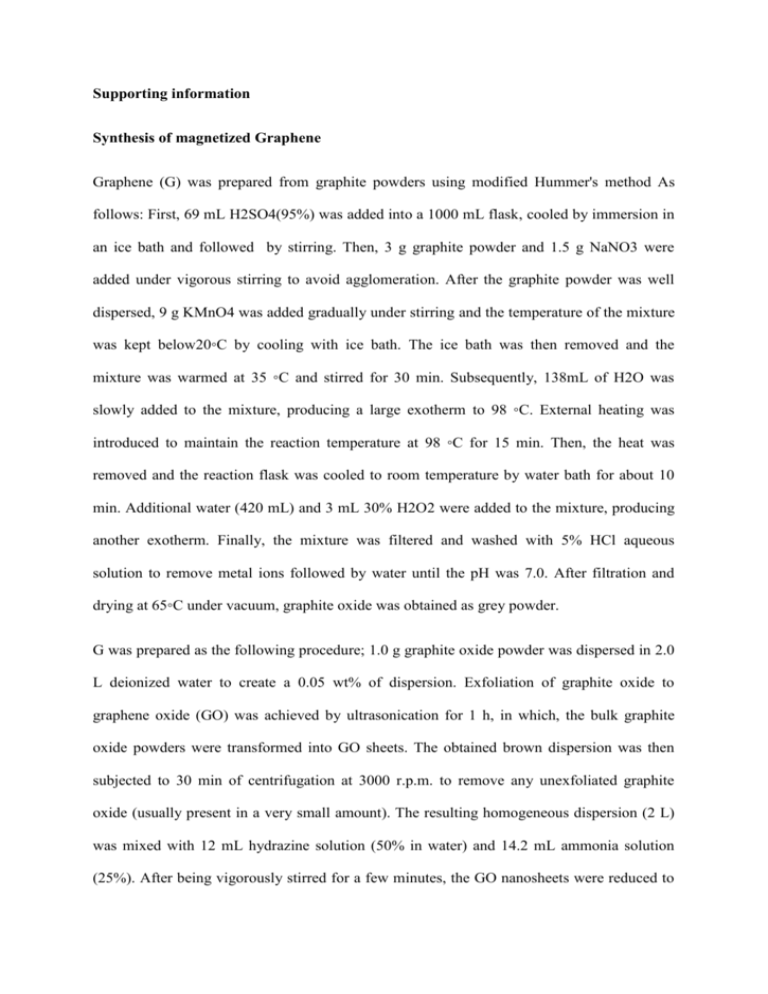
Supporting information Synthesis of magnetized Graphene Graphene (G) was prepared from graphite powders using modified Hummer's method As follows: First, 69 mL H2SO4(95%) was added into a 1000 mL flask, cooled by immersion in an ice bath and followed by stirring. Then, 3 g graphite powder and 1.5 g NaNO3 were added under vigorous stirring to avoid agglomeration. After the graphite powder was well dispersed, 9 g KMnO4 was added gradually under stirring and the temperature of the mixture was kept below20◦C by cooling with ice bath. The ice bath was then removed and the mixture was warmed at 35 ◦C and stirred for 30 min. Subsequently, 138mL of H2O was slowly added to the mixture, producing a large exotherm to 98 ◦C. External heating was introduced to maintain the reaction temperature at 98 ◦C for 15 min. Then, the heat was removed and the reaction flask was cooled to room temperature by water bath for about 10 min. Additional water (420 mL) and 3 mL 30% H2O2 were added to the mixture, producing another exotherm. Finally, the mixture was filtered and washed with 5% HCl aqueous solution to remove metal ions followed by water until the pH was 7.0. After filtration and drying at 65◦C under vacuum, graphite oxide was obtained as grey powder. G was prepared as the following procedure; 1.0 g graphite oxide powder was dispersed in 2.0 L deionized water to create a 0.05 wt% of dispersion. Exfoliation of graphite oxide to graphene oxide (GO) was achieved by ultrasonication for 1 h, in which, the bulk graphite oxide powders were transformed into GO sheets. The obtained brown dispersion was then subjected to 30 min of centrifugation at 3000 r.p.m. to remove any unexfoliated graphite oxide (usually present in a very small amount). The resulting homogeneous dispersion (2 L) was mixed with 12 mL hydrazine solution (50% in water) and 14.2 mL ammonia solution (25%). After being vigorously stirred for a few minutes, the GO nanosheets were reduced to graphene by refluxing the mixture for 24 h using an oil bath (98◦C). The products were then centrifuged, washed with water, and finally air-dried. G-Fe3O4 was synthesized by chemical co-precipitation of Fe(II) and Fe(III) in an alkaline solution in the presence of G. The molar ratio of Fe (II) and Fe(III) was 1:2. The magnetic composite was prepared by suspending 0.5 g G in 200 mL of solution containing 1.7g(4.33 mmoL)(NH4)2Fe(SO4)2.6H2O and2.51g (8.66 mmoL) NH4Fe(SO4)2.12H2O at 50 ◦C under N2 atmosphere. After the solution was sonicated for 10 min, 10 mL of 8 mol/L NH4OH aqueous solution was added drop wisely to precipitate the iron oxides while the mixture solution was being sonicated. The pH of the final mixture should be in the range of 11 to12. To promote the complete growth of the nanoparticle crystals, the reaction was carried out at 50◦C for 60 min under shaking. The precipitate was isolated in the magnetic field, and the supernatant was separated from the precipitate by decantation. The impurities (such as sulfate and ammonia) in the G-Fe3O4 were removed by washing with deionized water and the precipitate was isolated by a permanent magnet. The obtained GFe3O4nanocomposite was then washed with 10 mL of absolute alcohol for three times. Subsequently, the composite was dried under vacuum and finally G-Fe3O4 was obtained.
